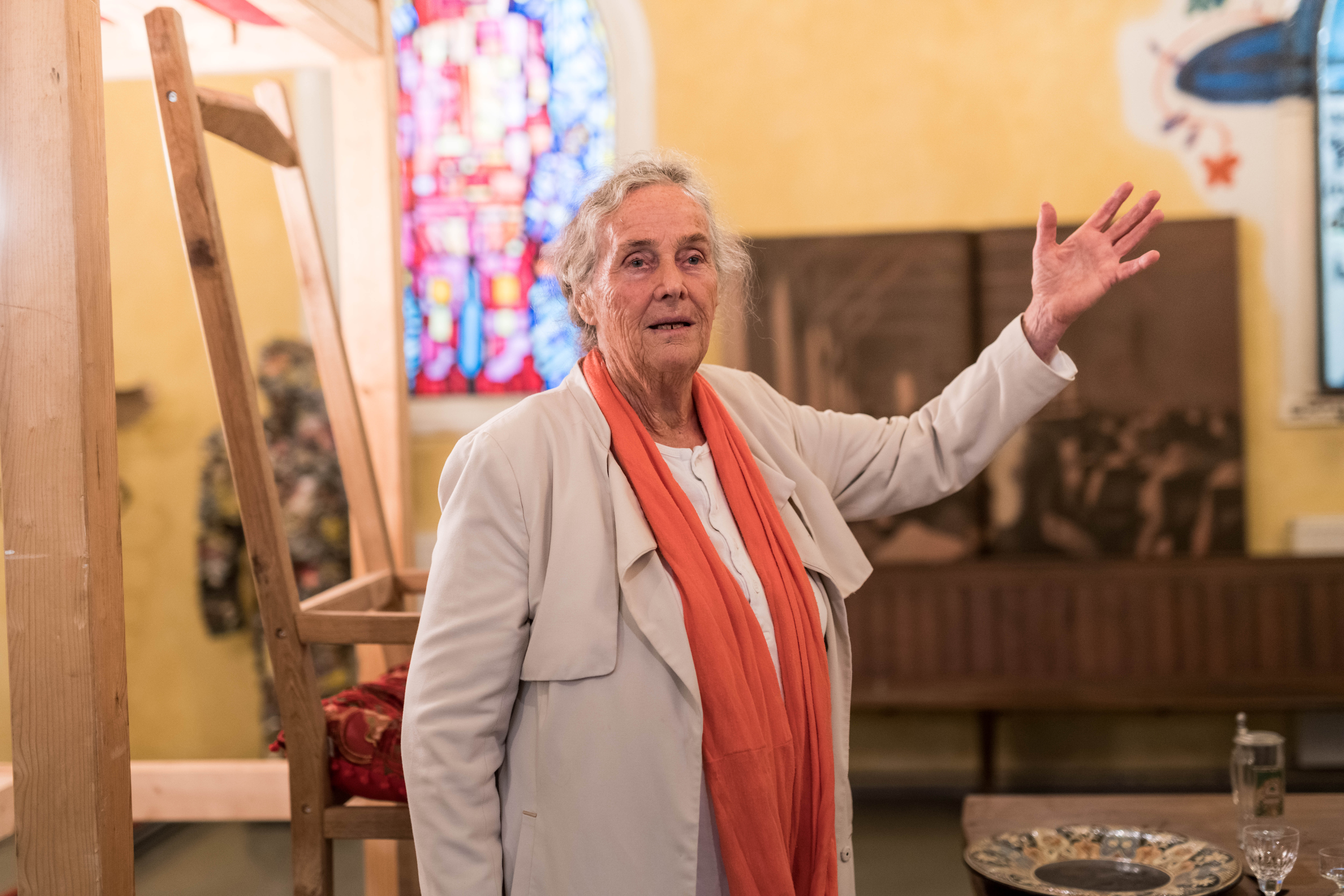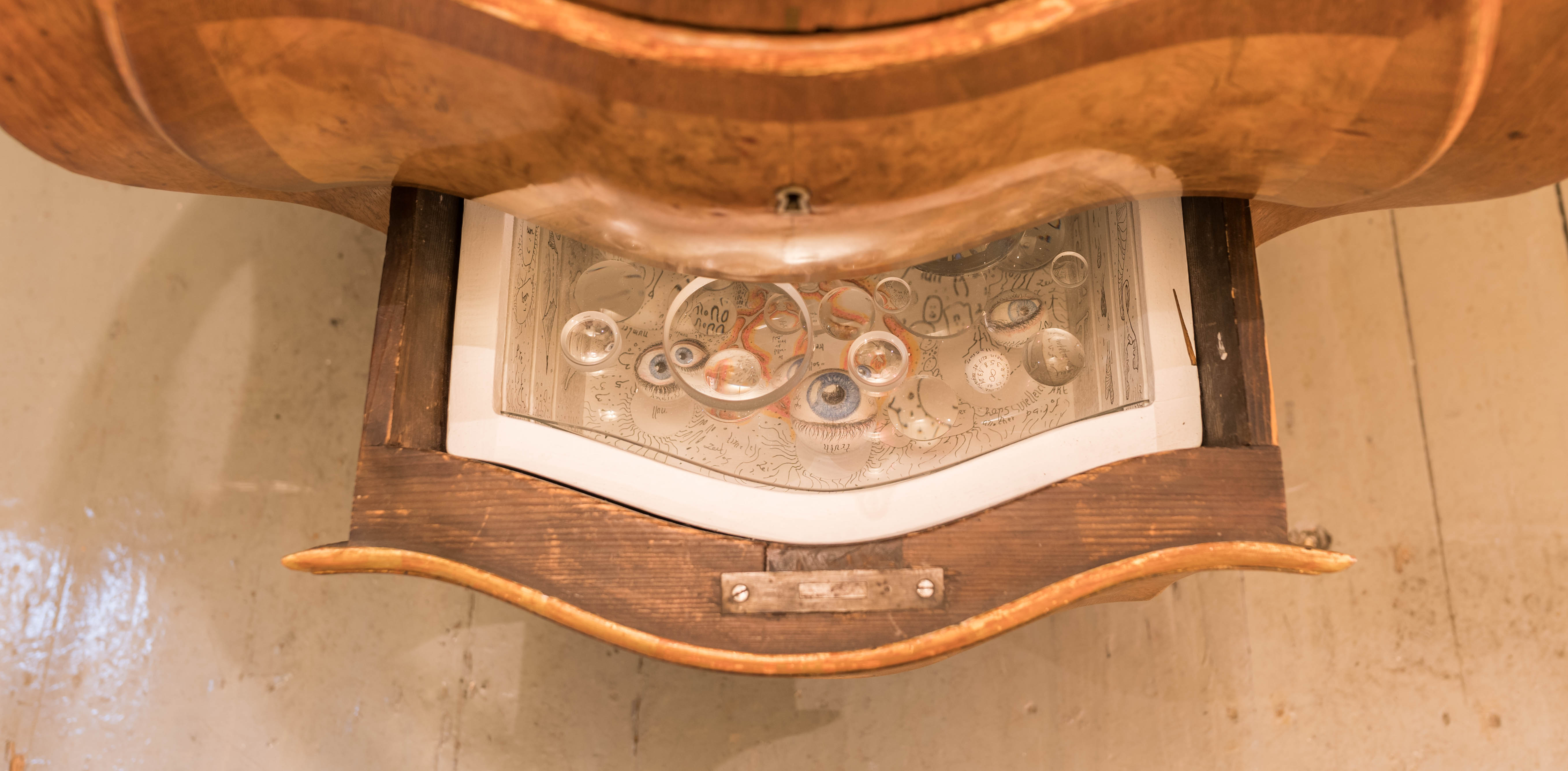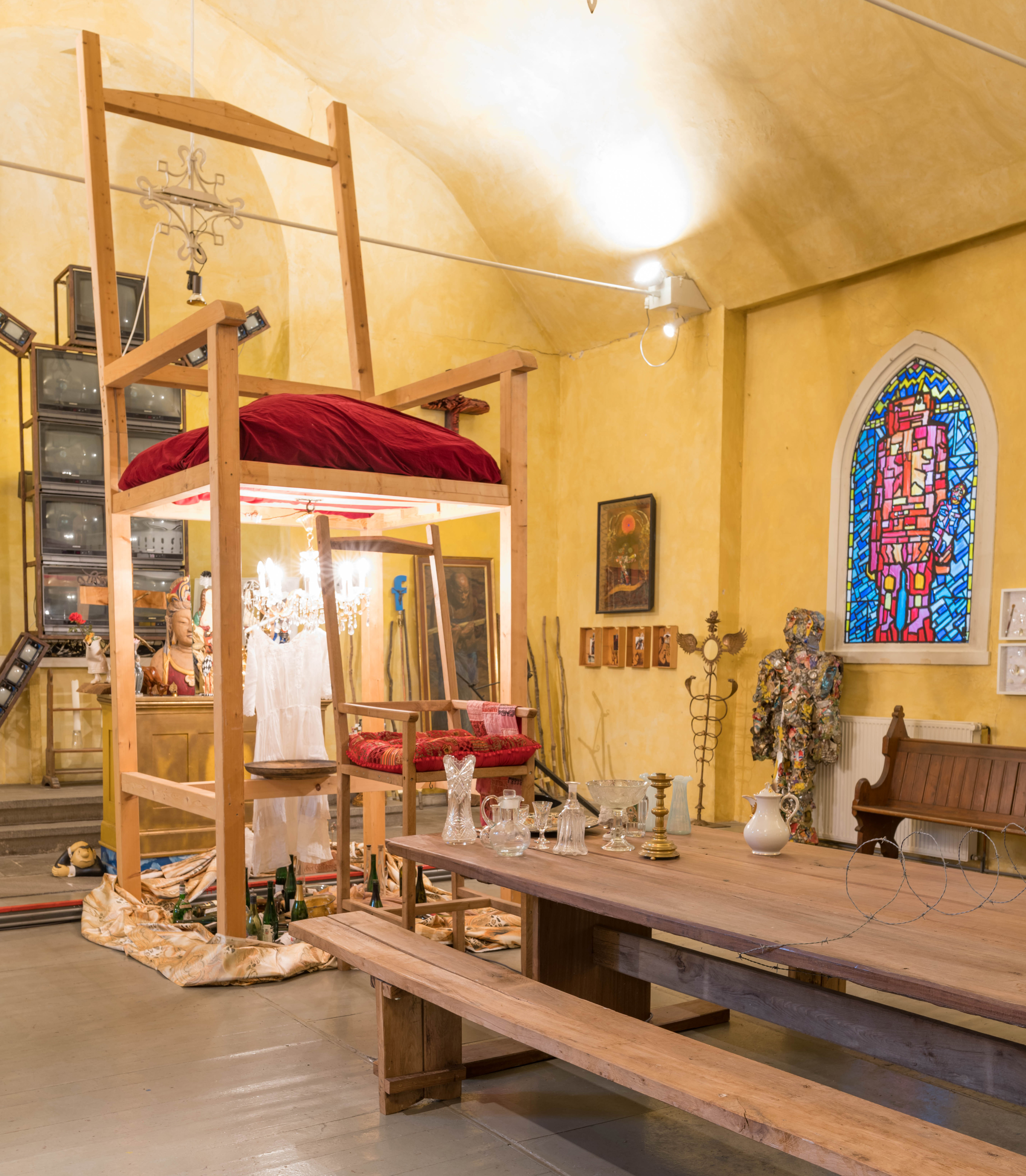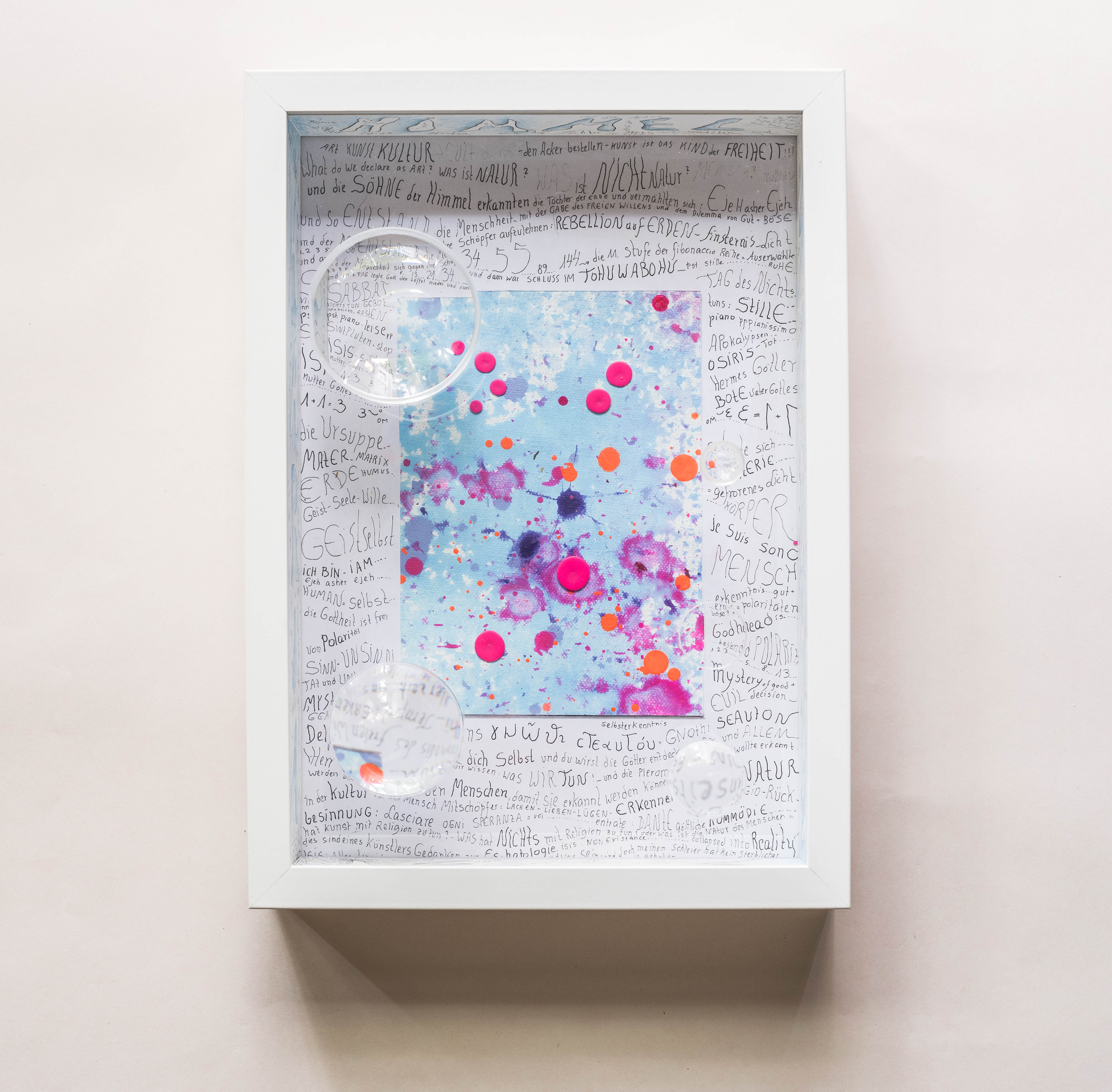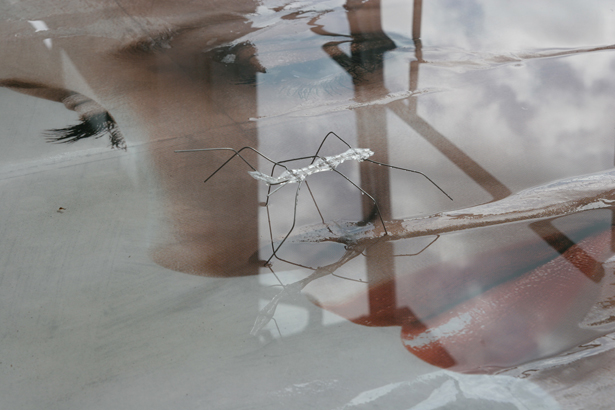Zuvielisation
Fluxus 60—Wiesbaden 1962-2022
June 3–August 7, 2022
“Too much, too much, too much” - Are we living in a civilisation of “too muches”? Mary Bauermeister’s large-sized installation Zuvielisation forms the centrepiece of the collaborative exhibition of Nassauischer Kunstverein Wiesbaden and the Berger Collection, taking place in a profaned church, the Humorkirche in Wiesbaden-Erbenheim.
Between 1960 and 1961, Mary Bauermeister used her studio in Cologne to create space for avant-garde artists and musicians. She invited, among others, John Cage, George Brecht, Benjamin Patterson, Nam June Paik and David Tudor to concerts, readings, exhibitions and performances. Many of those later came together under the name Fluxus, whose European debut was established in Wiesbaden in 1962 due to the media coverage of a piano destruction just a year later during the Fluxus Internationale Festspiele Neuester Musik. Through her work as well as through her activities, Mary Bauermeister became a source of inspiration early on, and manifested her role as pre-Fluxus artist.
On the occasion of the sixtieth anniversary of the Wiesbaden Fluxus events, Mary Bauermeister’s exhibition kicks off with the presentation of her last large scale installation originally produced in 2015 for Mittelrhein-Museum in Coblenz, now filling the naval of the Humorkirche, in close proximity to the American Airbase from where George Maciunas and Emmet Williams together with Benjamin Patterson planned their activities for the festival in Wiesbaden in 1962.
Deliberately integrated between the artworks from the permanent display of the Berger Collection within the church, Mary Bauermeister enters a direct dialogue with the same artists with whom she had been in close artistic contact and exchange since her Cologne Studio Days. Characteristic for her oeuvre is the inclusion of socially relevant topics such as the critical reflection of today’s consumer society. Accompanied by other works of hers and a sound installation of the composer Simon Stockhausen, her son, a brief insight into her work from all creative periods of her life is given.
An edition was created specifically on the occasion of the 175th anniversary of Nassauischer Kunstverein Wiesbaden consisting of 30 unique Überbleibsel Linsenkästen (Leftover optical lens boxes). Given her age, Bauermeister says, she is in the process of spreading the traces of her earthly existence: In addition to individual drawings and text creations, these works gather artistic legacies, such as cutouts of drawings, diaries and canvases, tools, brushes and paints from the artist’s studio, with added optical lenses to generate a wide variety of optics and impressions.
Mary Bauermeister, born in Frankfurt am Main in 1934, lives in Rösrath near Cologne. Her work can be found in the collections of the MoMA, Whitney Museum and Guggenheim in New York, the Museum Ludwig in Cologne and the Stedelijk Museum in Amsterdam, where she also had her first solo show in 1962. Within the last two years, Mary Bauermeister was awarded the Federal Cross of Merit for her long-standing artistic work as well as the art award of North Rhine-Westphalia for her outstanding artistic oeuvre. A close friendship has connected her with the Berger family for many years.
Humorkirche Erbenheim
The Church and humour are not readily associated with each other but within his church of humour, collector Michael Berger opens a place of laughter where people can gather to laugh and be cheerful together—following his motto “Expansion of consciousness through exhilaration of consciousness”.
Satellite exhibition in the Humorkirche Wiesbaden-Erbenheim
Wandermannstraße 2b
65205 Wiesbaden
Opening hours
Friday–Sunday and holidays 11am–6pm and by prior appointment: T 0611 301136 (free admission)
The exhibition Mary Bauermeister: Zuvielisation is funded by the Kunststiftung NRW and the Nassauische Sparkasse.

